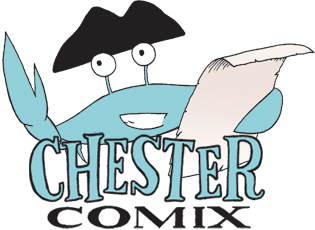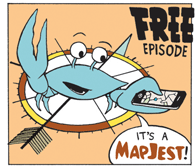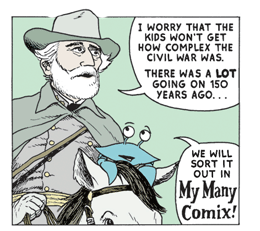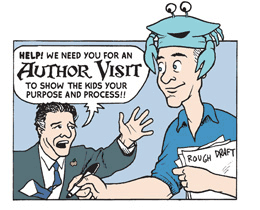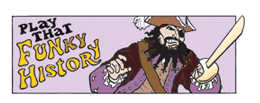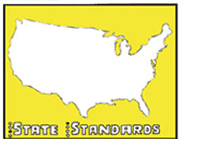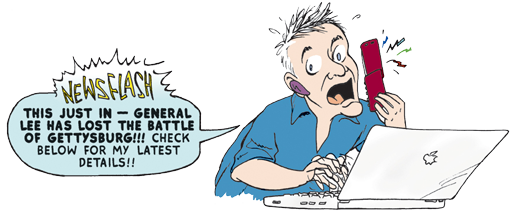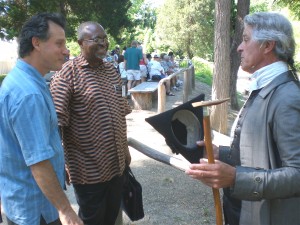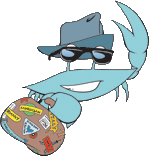This week I met Souindoula Simao, director of Angola’s National Museum of Slavery! He is on a three-week tour of the United States to build partnerships with museums here and better tell the story of the African genocide during the trans-Atlantic slavery trade.
I interviewed him for a story in the Daily Press (www.dailypress.com), the paper that hosted Chester the Crab for 13 years. Mr. Souindoula was a true historian: well-spoken, curious — and, ummmm . . . lengthy! (I think I asked him three questions but his answers filled the 40-minute interview on the shaded porch of a Colonial Williamsburg home.)
I had a wonderful time learning new things from him about the cultural connections between his nation in southern Africa and our continent. Did you know there’s a coastal town in Delaware called Angola? The African nations took slaves in their wars, but the number of slaves taken really jumped when the Europeans started buying. Mr. Souindoula’s museum is in a Portuguese slave trader’s seaside home, where thousands of slaves were baptised before being crammed into ships for the Middle Passage to the Americas (a trip that killed many of them).
This was a great connection to make. You can see it in the photo I took of Mr. Souindoula, his Portuguese translator, and a Colonial Williamsburg interpreter portraying a newspaper publisher of Colonial times. Our Founding Fathers weren’t all white gentlemen who now appear on our money; it took men and women of all colors and backgrounds to build the nation we have today.
This entry was posted on Thursday, June 5th, 2008 at 1:24 pm and is filed under Colonial Williamsburg. You can follow any responses to this entry through the RSS 2.0 feed. You can leave a response, or trackback from your own site.

